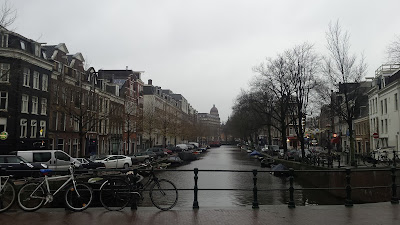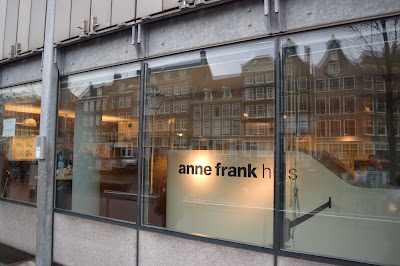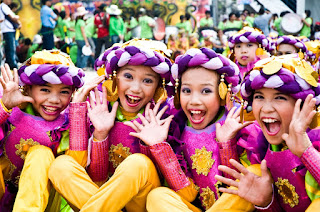Amsterdam, Netherlands: Amalgamation of the Past and Present - Day 1
The beautiful Dutch city is a dream city for me to visit so when I got the opportunity to fulfill this, I did not hesitate, especially during the Yuletide season. I get to celebrate Christmas while learning how the Dutch city emerged as a global city from its rich historic past to where it is now.
Click here for the second day of my adventure in Amsterdam.
Click here for the second day of my adventure in Amsterdam.
1. Vondelpark
This 45-hectare land
piece is Amsterdam’s largest park and is within the vicinity of other tourist
attractions, which somehow paved the surge of millions of tourists to this park
built by architects inspired by Paris and Rome.
2. Concertgebrow
After the lowest
point of the Dutch history when France occupied Netherlands, the second Dutch
Golden Age ushered during the 19th century, which is characterized by the
establishment of several museums and art buildings, including the
Concertgebrow.
3. Museumplein Christmas Village
The Christmas Village
somehow showcases the influence of traditions outside what the Dutch could
claim entirely as their own. This is the same in the architecture of buildings
that reflects French Empire, which occupied Holland for several decades after
the Napoleonic Wars.
4. Van Gogh Museum
Located within the
Museum Square, this art museum dedicated for the works of Vincent van Gogh and
his contemporaries.
5. Rijksmuseum
Patterned after Paris’ The Louvre, Rijksmuseum has been established first by the Batavian Republic in the Dutch administrative city of The Hague before moving it to Amsterdam due to orders from French conqueror Louis Napoleon Bonaparte, who headed the puppet kingdom of Holland under the French Empire.
6. Lijnbaansgracht
Notably, Amsterdam
boasts for its canal networks, which somehow reflects the origin of the city’s
name that literally means the dam or bridge created to protect from recurring floods
the people along the Amstel River. There are many canals that still exist today
and some were covered such as Lijnbaansgracht, which is on the northern side of
the Rijksmuseum.
7. Spielgelgracht
Designated as one of
the UNESCO World Heritage sites, Spielgelgracht is near the Prince Canal or
Prinsengracht.
8. Kerkstraat
It is a street in the
center of Amsterdam. The street runs from the canal eastwards across the river
Amstel. In the sixties, Kerkstraat or Church Street is where gay clubs and bars
are most found.
9. Singel
This is the innermost
circle of Amsterdam, which dates back from the Middle Ages. This is also the
site of the city’s flower market, where market stalls are actually boats
floating in the canal.
10. De Krijtberg
This Neo-Gothic
Catholic Church is dedicated to the Jesuit saint Francis Xavier. Due to space
limitations, the church architects have decided to construct a tall and
monumental façade.
12. Magna Plaza
A Neo-Renaissance
style monumental shopping building was a former post office of Amsterdam.
13. De Nieuwe Kerk
In the 13th century, Amsterdam has embraced the Protestant
faith, also during the time Amsterdam gained the city rights. This new
religious adherence became a symbol of rebellion against the Spanish empire,
which revers the Catholic faith of the Holy Roman Empire. During these time,
churches have been used for Calvinism including the Old Church in De Wallen. As
the city population grew, there was a need to construct a new church on Dam
Square today.
14. Koninklijk Paleis Amsterdam & Dam
The Royal Palace is
one of the three palaces in Netherlands for the use of the monarch of the
Kingdom of Netherlands. This was the old city hall before the puppet French
kingdom of King Louis Napoleon used as an official palace.
15. Herengrancht
One of the three main
canals circling the city center is Herengracht, along with Prinsengracht and
Keizersgracht.
16. Homomonument & Keizersgracht
The widest of the
inner canals of Amsterdam, Keizergracht is named after the Emperor Maximillian
of Austria. During the winter, a sprintrace is conducted as one of the activities
in this historic canal, which was initially planned to be a simple boulevard.
17. Westerkerk
Along the banks of
Prinsengracht is the Westerkerk, which differs from the Old Church in the Red
Light District and the New Church in Dam Square because it was intentionally
built for the Dutch Protestant Church, while the two other churches were just
converted from Catholic churches to Protestant houses of worship.
18. Anne Frank Huis
During the World War
2, German forces invaded Netherlands. At this time, Jews and Dutch protecting
them were punished by torture and death in German concentration camps. One of
the most influential and inspirational Dutch Jew is Anne Frank.
19. Leilegracht
The canal is located
within the local city centre. This canal was necessary
because the waters of the Prinsengracht (along with the rest of the Jordan
River canals) remained at lower level, while the level of the water in the
Leliegracht, Keizersgracht and Herengracht was on the upper level of the city.
20. Prinsengracht
It is the third and outermost of the three main canals of Amsterdam.
This canal marked the booming population and expanding area of the city. The
entrance to the Prinsengracht is the ‘Eenhoornsluis’ (Unicorn Lock), one of the
16 waterlocks which were built around the city in the 17th century, to control
the waterlevel in the canals and to protect the city against the sea.
21. Nationaal Monument
This monument is a
national remembrance of the casualties after the World War 2. The pillar has an
inscription which states, "Here, where the
heart of the fatherland is, may this monument, which citizens carry in their
heart, gaze at God's stars.
22. Beursplein & Beurs van Berlage
The Amsterdam Stock Exchange
is considered the oldest in the world. Nearly the Amsterdam Stock Exchange is Beurs
van Berlage, a building used for concerts, conferences and exhibitions.
23. De Oude Kirke
This is Amsterdam’s
oldest parish, which became a Calvinist church in the 15th century from a
consecrated Catholic church. Ironically, the church is located on the heart of
De Wallen or Amsterdam’s Legal Prostitution Area.
24. Red Light District
Also known as the De
Wallen or The Quays, the Red Light District is the oldest city district of
Amsterdam, which is now home of about 300 one-room cabins being rented by
prostitutes enticing possible customers for sexual services. These cabins are
lighted in red at night, thereby giving the name of Red Light District, which
somehow manifests the value of freedom among the Dutch and as a lucrative
source of tax for the Dutch government.
25. Basiliek van de H. Nicolaas
This is the Amsterdam’s
major Catholic church and is located on the Old city district near the
Amsterdam Central Station. In the 125th year of
its existence, St Nicholas' Church elevated to "basilica minor" or
basilica.
26. VVV I amsterdam Visitor Centre Stationplein
In front of the Central Station in an old style wooden house is the Amsterdam Visitor Center. Interestingly the
Visitor Center is a tourist attraction itself.
27. Amsterdam Centraal
It would be natural
to think that in the ancient times, this same area has been the focal point of
merchants coming from America’s Dutch West India Company and Asia’s Dutch East
India Company. Now, the Amsterdam Central Station connects several suburban
areas of Amsterdam and serves as a converging point of both locals and
tourists.
28. De Rujijterkade
The Ruijterkade is
located along the north side of Central Station. The quay was built in 1880 on
the new Station Island, as part of a restructuring project of the traffic
flows, in conjunction with the construction of the North Sea and the expansion
of rail traffic.
29. Westertoegang
The street connects the Prins Hendrikkade and the Ruijterkade. The
Wester Access has no zip code because no one can live. Across the street is the
West Underpass, a complex of railway bridges to Central Station. In the past,
the part of the prostitution area around Central Station. Because of the
inconvenience the ladies were expelled.
30. Clifford Chance
A building on the
western side of the Central Station is the home of experienced lawyers serving
the Dutch population.
31. Schreierstoren
It
is originally part of the medieval city wall of Amsterdam, the
Netherlands, was built in the 15th century. The
myth that it was the place where sailor's wives were weeping when their men set
sail is a romantic falsification
The first day in the Dutch capital was a rewarding and memorable experience. It would have been better if I got the chance to spend more time on each tourist attraction and learn more in details. However, certainly this will not be the last time I will be visiting the amazing city of Amsterdam.


















































Comments
Post a Comment